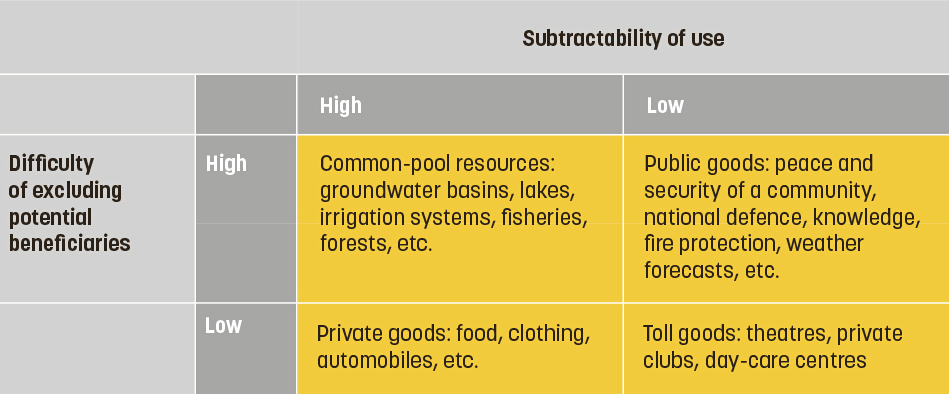International co-operation in science, technology and innovation (STI) has been a long-standing priority for policy makers. More recently, societal or grand challenges such as climate change, food security, and global health issues, have been thrust higher on the agenda of science and innovation policy makers.
Svend Otto Remøe, Special Adviser, The Research Council of Norway
The Sustainable Development Goals (SDGs) are being embedded in national economic development strategies and innovation strategies. There is a shared understanding among scientists and policy makers that STI will have an important role to play in addressing the SDG.
The challenge for most countries is how to balance their national STI priorities and goals (e.g. competitiveness goals, Research excellence goals) and the need for co-ordinated collective action at international Level to address «global public goods» problems as distinct from public goods problems that can be addressed at national level (e.g. provision of national public health services or compulsory education).
In this context, the Committee of Science and Technology Policy of OECD held a workshop with the Research Council of Norway on «STI for Global Public Goods» on 6-7 June 2019 in Oslo, Norway. This article brings together the main outcomes of the workshop.
Understanding GPGs
Public goods relate, strictly speaking, to goods (or services) that are non-rival and non-excludable. This means that they can be consumed without reducing availability of the goods for others, and it is not possible to prevent anyone from consuming it.
A global public good (GPG) can benefit «consumers» from more than one group of countries. GPGs are goods that are consumed in the public domain, but not necessarily provided by the state.
The natural or environmental commons like air, biodiversity and the oceans, are often seen as typical GPGs to be enjoyed and consumed by all. However, as was addressed in the workshop, such commons are often reduced in quality or quantity through the way they are consumed, leading to deterioration of such commons. It is therefore useful to distinguish between GPGs and what may be termed «common-pool resources» or commons that suffer from the subtractability of use – i.e. the risk of overexploitation (fig. 1).
Figure 1. Classification of goods.

Source: Ostrum 2009, p 413, cited in Smith 2017.
Preserving environmental commons
The natural or environmental commons are essential to humankind’s well-being. Ensuring the health of these commons is therefore vital. For example, the current loss of biodiversity is a serious concern.
The ocean was highlighted at the workshop as an illustrative example of a global commons whose preservation requires extensive collaboration and sharing of responsibility1 including in science and technology.
And while there is much co-operation on marine resources at the regional level, co-operation at the global level is necessary to support collective action. Institutions such as the International Council for the Exploration of the Sea (ICES) are key to providing policy advice that can lead to action and enforcement.
International co-operation in Technology can also help improve the knowledge of the ocean environment through better sensors and monitoring, sharing of infrastructures such as research vessels, and expanding technological frontiers like in the area of subsea technologies.
There are still significant gaps in data and indicators on the state of the environmental commons and in cross-country comparability. This could be addressed through further international co-operation.
Technology and intellectual property
The workshop raised the issue of the link between intellectual property rights (IPRs) and global health as illustrated through the legal framework of TRIPS (Agreement on Trade-related Aspects of Intellectual Property Rights).
While IPRs are critical in ensuring that innovators may capture sufficient benefits from their innovations, there is also a need to reconcile this need with the public good and human needs.
Affordable access to medicines is but one example and providing sufficient incentives in areas like neglected diseases and antibiotics is important. Mechanisms for sharing intellectual property offer a way to diffuse and improve access to medicines in low income countries.
Digital public goods
Digitalisation represents new opportunities to provide GPGs. In particular, its Development leads to new opportunities for the STI system itself. It enhances open access to Research data and outputs by improving Accessibility through the FAIR principles (i.e. Findable, Accessible, Interoperable and Reusable) and open software, and better exploitation of research infrastructures.
Digitalisation of public research data and copyright-free or open-licensed software offer new ways to provide GPGs. Hence, science and knowledge are benefitting greatly from the process of digitalisation.
GPGs may also be provided through a better harmonization of national data commons, inviting collective action and Collaboration to deliver true global Research networks and global data commons.
Education and public health are areas which benefit from this process. For example, digital libraries based on open source software offer new ways to provide educational services to communities not normally having access to such resources. Health information systems based on open platforms may serve as important GPGs for resource-constrained countries.
Because knowledge and technology are key to the provision of GPGs, there is a case for identifying and exchanging policy lessons from efforts to promote the diffusion of technologies using new mechanisms such as intellectual property sharing tools or public procurement in developing countries.
Governance and funding
While much international co-operation in STI takes place through bilateral agreements with the aim of advancing science and promoting economic growth, GPGs represent a challenge to existing global governance and funding arrangements.
The workshop raised the problem of a global architecture unfit for the challenges at hand. For example, dynamic coalitions of partners in funding GPGs may often be more effective than global formal institutions, as was illustrated in the case of a health information project led by the University of Oslo. This may also support the need for gradual scaling of projects based on learning (fig. 2).
Incentives for early stage innovations are important to stimulate high-risk research, but incentives on the demand side are lagging. Finding effective modalities for Collaboration and funding is key to providing GPGs. Furthermore, building effective partnerships between stakeholders and participants are important, such as in the case of science diplomacy in global health, and between the insurance industry, public bodies and science and technology.
Figure 2. Dynamic coalitions and scaling of funding.
 The figure shows how the funding (black curve) accumulates over time as more donors join and how the projects scale up activities in low and middle income countries (blue) and India (orange), supported by investment in the core platform (grey). The boxes represent the entry of important donors. Y-axis left: Number of countries. Y-axis right: Funding in mill. USD.
The figure shows how the funding (black curve) accumulates over time as more donors join and how the projects scale up activities in low and middle income countries (blue) and India (orange), supported by investment in the core platform (grey). The boxes represent the entry of important donors. Y-axis left: Number of countries. Y-axis right: Funding in mill. USD.
Source: University of Oslo, Department of Informatics. Presented by Kristin Braa.
****
1This is embedded in the United Nations Convention on the Law of the Sea from 1982. The convention lies at the heart of the global governance of the ocean, and regulates issues such as maritime zones and territories, rights of passage, peace and security, protection and preservation, management of marine living resources, as well as obligations to conduct, promote and facilitate marine scientific research, including international Collaboration.

